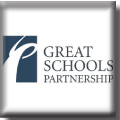2015-16 CCS LEADERSHIP COMMUNITY OF PRACTICE – WORKSHOP #1
 |
DATE: October 29, 2015
GUEST PRESENTERS:
|
 |
This guide, designed as a flip chart, was developed by Dr. Karin K. Hess for the Common Core Institute. It consolidates numerous tools educators use to implement Webb’s Depth of Knowledge for curriculum and assessment and compares the levels to those of the Revised Bloom’s Taxonomy. It also provides examples drawn from several classroom-tested DOK tools, including:
|
ACHIEVE
 |
EQuIP Rubrics: Math | ELA/Literacy (3-5) and ELA (6-12) | ELA/Literacy (K-2)
The EQuIP rubrics are designed to evaluate lessons that include instructional activities and assessments aligned to the CCSS that may extend over a few class periods or days as well as units that include integrated and focused lessons aligned to the CCSS that extend over a longer period of time. The rubrics are NOT designed to evaluate a single task or activity. A specific template for lesson or unit design is not required. The EQuIP Rubric electronic feedback forms are organized by each dimension in the rubric with spaces to: (1) indicate which criteria are observed or not observed in the lesson or unit; (2) provide written feedback and suggestions for improvement; and, (3) assign a dimensional rating. The last page of the feedback form is used to assign an overall rating and provide summary feedback and suggestions for improvement. To use these forms you must have the most recent version of Adobe Reader downloaded to your computer. Rubrics by content area can be accessed at the links below. |
GREAT SCHOOLS PARTNERSHIP
 |
Grading + Reporting: Proficiency-based Learning Simplified
This web resource from the Great Schools Partnership provides school leaders and teachers with detailed guidance on developing a proficiency-based grading and reporting system. One of the primary goals of a proficiency-based grading system is to produce grades that more accurately reflect a student’s learning progress and achievement, including situations in which students struggled early on in a semester or school year, but then put in the effort and hard work needed to meet expected standards. If you ask nearly any adult, they will tell you that failures — and learning to overcome them — are often among the most important lessons in life. Yet many traditional grading systems penalize students for a single failure or poor test performance. Failures are nearly always encountered on the path to understanding and success; and, proficiency-based approaches to grading can help teachers, students, and parents to focus on the end goal — learning the most important knowledge and skills — rather than on the struggles or mistakes made along the way. Another advantage of proficiency-based grading is that learning progress and achievement are more clearly documented for students and parents. Consider, for example, this question: What does a “C” mean? While the grade is a deeply familiar symbol, and more or less everyone has received a C at some point, what does the grade actually convey about learning? What was taught in the course? What knowledge did those C students acquire? What skills did they learn? Can the students write well, do math, conduct research, think critically, communicate effectively, or use a computer? Did they work hard and make a lot of progress over the semester, or did they slack off and hardly try at all? The fact is that a C just doesn’t tell us much. When proficiency-based grades are connected to clearly articulated learning standards, educators and parents know, with far more precision, what a student has actually learned or failed to learn. |
ILLUSTRATIVE MATHEMATICS
 |
Illustrative Mathematics
Illustrative Mathematics is a community of educators who collaborate, sharing vetted resources for teachers and teacher leaders to give children and understanding of mathematics and skill in using it. They provide guidance to states, districts, curriculum writers and assessment writers; and, the resources on their site are organized by five categories:
|

